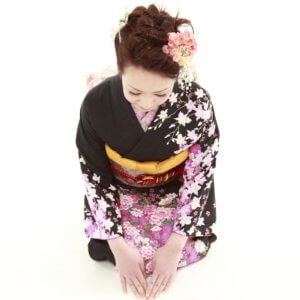Japanese Innovative Products: Zero-calorie Candy, Dried "tsukemono" (pickled vegetables), Chocolate Kimono
CONTENTS
From a unique idea to producing a “first” product
If one was to suggest people such as Jack Welch, Bill Gates and Steve Jobs as the business giants created by the current times, it is unlikely anyone would voice an objection. A point these illustrious businesspeople have in common is their “non-stop” quality. Steve Jobs was always seeking new angles; continuously thinking, “Is there not some way the design could be better?”
However, there are also some giants among “non-stop” businesspeople who are still inconspicuous. Although their businesses are not so large in terms of scale, like trees prepared for growth with roots firmly spread into the ground, these little giants are exerting a growing influence on society.
The driving spirit and the origins of the ideas of this company and two individuals follow below.
Japan First: Making Zero-calorie Candy, “Lakanto Calorie Zero Candy”
The origin of the idea conceived 60 years ago: “Kind to the environment, beneficial to society.”
Saraya Co., Ltd. Main business areas: manufacture and sale of home and industrial use detergents, disinfectants and mouthwash.
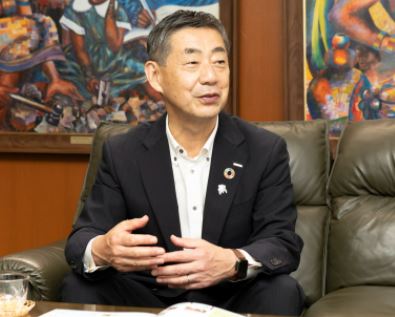
The origins of the founder’s ideas, “Kind to nature” and “Useful to society,” have not altered from the era of the company’s founding in 1952 right up to the present. These unwavering values originate from the abundance of nature in the hometown of Kumano city, Mie Prefecture in which founder and current chairman Shota Saraya grew up. Thinking about the global environment was unusual in the 1950s, which are known as a time when Japan was welcoming in a period of rapid growth, yet the company founder was already aiming to develop products that considered the global environment.
At the time he founded the company, Shota Saraya developed a Japan-first product. Thinking about how to “provide antibacterial and disinfectant capability while washing one’s hands,” Saraya developed the “clinical use liquid soap” Shabonet and also developed a specialized push-button/push-top style dispenser that enabled the liquid soap to be used simply while preserving its cleanliness. The backdrop to this was the spread of contagious diseases such as dysentery after the Second World War. The green liquid soap, seen everywhere today, was born in 1956 and continues to be used even now, over 50 years later. Saraya also considered mineral oil soap and he chose palm oil – which is kind to both the environment and human hands, exists in nature and also has cleansing power – as the base ingredient of his liquid soap. Since then, palm oil would also become the base ingredient for Saraya products.
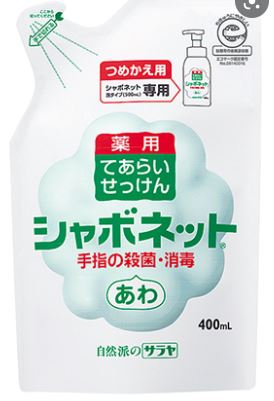
In 1960, taking cues from the public slogan “Manage health by gargling and washing your hands,” the company started developing mouthwash. It devised the world’s first automatic gargling utensil (a device that sprayed the appropriate dilution of mouthwash from a nozzle just by pressing a pedal, without need for a cup). Atmospheric pollution was increasing due to Japan’s rapid economic growth, and so the device started being used in places such as schools.
Under the concept of “Kind to the earth and to people,” the vegetable-based neutral detergent “Yashi no Mi Detergent” was created in 1971 using palm oil. That was an era when detergents were causing pollution of waterways, so starting from the notion that “It’s odd that detergents are polluting rivers when they’re supposed to clean things. We need a detergent that won’t pollute rivers,” the founder developed a product from palm oil. However, the price was expensive compared to mineral oil-based detergents and so did not immediately sell, but as the product is gentler on one’s hands and has good biodegradability, it gradually increased in popularity and is now a 40 year-plus long-seller.
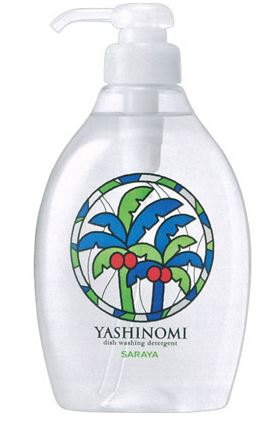
Incidentally, the bottle design is home interior-friendly, while the bottle itself is a pump-style dispenser that allows the amount used to be adjusted easily. These are also environmentally friendly concepts: by making a stylishly designed bottle that can be used for a long time, consumers are more likely to refill the contents; while if the amount used can be adjusted, washing can be done without using a wasteful amount.
After that, the company developed Japan’s first quick-drying alcohol hand disinfectant, “Hand Sanita,” in 1973, while this year it developed the next-generation natural detergent “Happy Elephant.” The product uses vegetable palm oil and its base ingredients are 100% non-mineral-based, so it is gentle to humans and swiftly degrades back to a natural state after drainage.
Providing a Healthy Lifestyle
Although Japan is one of the world’s leading countries on longevity, the number of sufferers of lifestyle-related diseases is rising. The rise in the number of diabetes sufferers especially is becoming a social problem. Diabetics have to manage their diets, but this is tough given the widespread use of synthetic sweeteners in processed food, which tend to raise blood sugar levels.
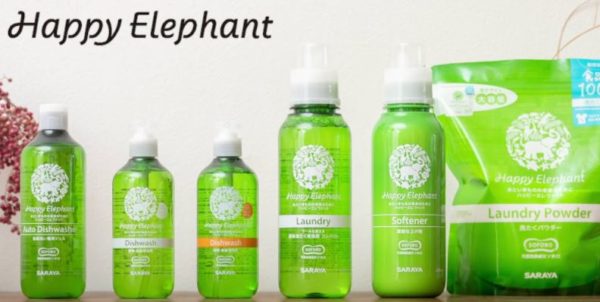
Responding to the demands of such lifestyle-related disease sufferers for “Candy that can be eaten when I want something to chew or fancy something sweet,” Saraya’s consumer division developed Japan’s first zero-calorie candy in 2009. The product only uses natural ingredients such as luohan guo (siraitia grosvenorii) extract as sweeteners rather than using synthetic sweeteners or sugar. It is also free from artificial colorants and synthetic preservatives. This year, zero-calorie candy was awarded the Osaka Industrial Research Association “Industrial Technology Award.”
The progenitor of this zero-calorie candy is “Lakanto S,” which went on sale as Japan’s first zero-calorie sweetener in 1995. Lakanto S is a zero-calorie sweetener made solely from plant-derived natural ingredients. The base ingredient of this zero-calorie sweetener is the fruit of the luohan guo plant, which can only be picked in Guilin, China, and has been used in that country as a herbal medicine since long ago. Lakanto is an extraordinary substance with 300 times the sweetness of sugar and zero calories. The sweetness of Lakanto S was made to match the sweetness of sugar, so it can be used for cooking or in coffee, as well as for making cookies and cakes – in just the same way as when one would use sugar.
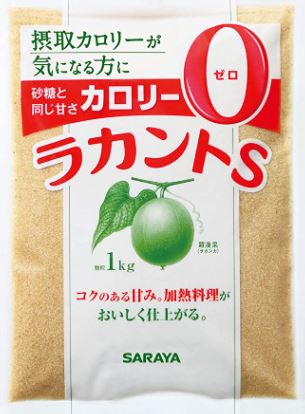
Finally, there is something else worth noting about the nature of Saraya and its consideration of nature: Saraya continues its activities to protect the environment by contributing to conservation groups in countries such as Malaysia where it sources the palm oil. In addition, even today, as Saraya welcomes in the 60th year since its foundation, the company strives to be a business capable of contributing to sustainable production and consumption by measures such as introducing RSPO-certified palm oil. The company also makes utmost efforts not to be complicit in unjust exploitation of labor in countries from which it procures base ingredients.
Industry First: Developing “dried tsukemono”
Bring even old things in line with today’s lifestyle
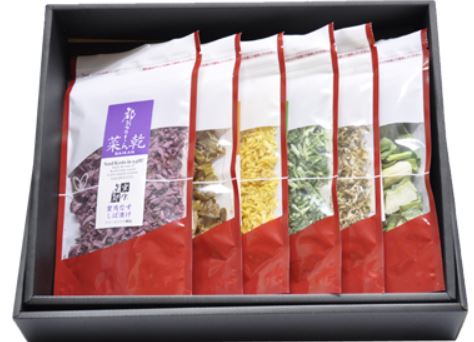
Tsukemono (vegetables preserved in salt, salted rice bran, or miso) are heavy. The delicious tsukemono from the regions of Japan are also heavy, so people often avoid them. Yet tsukemono are an indispensable dish on the Japanese dining table. Sakuo Morita, founder of Morita Ltd., has developed tsukemono that can be used for a wide range of purposes that solve the weight problem.
The origins of Sakuo Morita’s idea are simple: “Can tsukemono not be made lighter and preserve for longer?” and “Can tsukemono not also be used in cooking?” Tsukemono must be refrigerated and do not keep long. However, freeze-drying tsukemono transforms them into a quality product that keeps for 180 days and weighs around one tenth what it did before.
Morita began selling these tsukemono around 10 years ago. Although it was a new business, tsukemono are a traditional food with around 1,300 years of history. What was his motivation? Morita answers, “There is a master teacher for me. A certain miso-maker in Kyoto freeze-dried miso and put it on sale. I thought, if it can be done with miso, it can also be done with tsukemono.”
However, it was easier said than done. How much moisture should be left in the dried product? How much of the original shape would have to be retained for buyers to recognize it as tsukemono? Morita proceeded by repeated trial and error. Furthermore, the amount of moisture differs according to the tsukemono ingredients and if the color of the vegetable changes people would no longer be able to tell what vegetable it was – appearance is important. However, from Morita’s strong desire to delight consumers with tsukemono that reconstitute in water – a product that he would want to use himself – a new format of tsukemono called “Miyako no Tsukemon – Saikan” was born, with 11 varieties of freeze-dried tsukemono.
Furthermore, ideas-man Morita does not simply just sell Saikan as tsukemono -- he also suggests recipes that allow the product to be used to its fullest. In addition to being an accompaniment to rice or mixed into dishes such as rice balls, ochazuke (hot green tea poured onto a bowl of rice with toppings like salmon or pickled plum), okayu (porridge) or fried rice, Morita has also promoted using Saika as a topping for somen noodles, Carpaccio and pasta – and even as an alternative to dressings for vegetable salads. It’s a case of “How you use it is up to you.” These days, Saika is even used in restaurant fare.
Searching for Items That Consumers Demand
So will Morita further expand his range of tsukemono? No, no – he will not change from the 11 tsukemono varieties. His aim is to freeze-dry Kyoyasai (Kyoto vegetables), which will lead storable food as well as regional development. The commercialization of four or five varieties is already complete. It seems the products are also well-received by patissiers, since the freeze-dried vegetables can be ground into a powder and mixed with whipped cream to decorate cakes in various colors.
Why did he decide to do this? Morita replies, “As the generations change, lifestyles also change. If you don’t realize this and keep on developing and selling products in the same ways you have to date, you’ll no longer be able to sell things. No matter how traditional something is, you’ve got to put it in a format that consumers will want and need. That’s why I never stop. If I stop, I’m finished. Everything I see when I’m out in the street is the source of my ideas. I’m always looking and thinking about why such-and-such is available here or why such-and-such is popular.”
World First: The Man Who Made Chocolate Kimono
Wanting to Tell the World About Japanese Culture
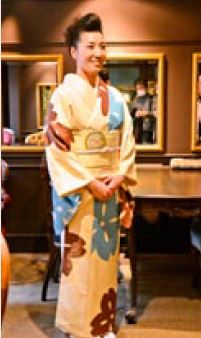
In April, chocolatier NY MarieBelle, which is purveyed by globally-known celebrities, opened its first Japanese store in Kyoto, actually first in Asia countries. The owner, Maribel Lieberman, is a fan of Japanese culture and it is said the Kyoto townscape reduplicates the atmosphere of Soho, New York. To mark the opening of its first store, MarieBelle decided to do something that would shock the world. They dyed a kimono with MarieBelle chocolate to create “The world’s first chocolate kimono.” It was a momentary collaboration between kimono, one of the symbols of Japanese culture, and the chocolate of Western culture.
The man behind this outrageous idea was the President of Kyokaori Co. Ltd., kimono stylist and designer Nobuaki Tomita. Just as he planned, news of the kimono raced around the world, even eliciting reactions such as “If the kimono was dyed with chocolate, does it smell nice?” and “If you licked the kimono, would it be sweet?”
Actually, this was not the first time Tomita had dyed kimono with something unique. Going by the name of Gotochi-zome (Local Dying), Tomita had previously dyed kimono using regional ingredients such as Kyoyasai. With other projects such as making iPad cases from the obi (belt) of kimono used in kabuki (traditional Japanese theater) and swimwear from kimono fabric, there are no limits to Tomita’s creations. These kinds of activities and ideas also caught the attention of universities, and Tomita now also lectures on kimono and Japanese culture at the University of Toyama and Kurume University. Moreover, there are almost no sleeping students in Tomita’s lectures, to the academic affairs department’s astonishment. The reason, he says, is that “I talk from experience on themes about the here-and-now in which we live. The content of my lectures doesn’t go by the textbook – my lessons get the students involved. So if the students are pro-active, they get something valuable from it, while if they do nothing, they miss their chance. I reckon this makes the students always pay attention.”
Tomita is active even abroad, conducting various kimono culture-related activities around the world such as a kimono lecture show in Dalian, China, to mark the 40th anniversary of the normalization of Japan-China diplomatic relations in June this year. Last year, he was in America for kimono shows at the Bowers Museum in Anaheim and at Japan-America societies.
Authenticity Touches People’s Hearts
Why does Tomita take on these unusual challenges? The key words for him are “Authentic,” “Particular” and “Japanese culture” – not merely a curiosity for uniqueness. Tomita often says, “You can’t take the real Mt. Fuji or Kiyomizu-dera Temple (in Kyoto) overseas, but you can promote Japanese culture to foreign people just by wearing an authentic kimono.” Inside the mind of kimono and Japanese culture-loving Tomita burns the desire to “somehow communicate Japanese culture to the world via kimono and show the world authentic Japanese culture.” As Tomita says, “These days, how many people wear kimono during their everyday lives? Kimono are not very practical. I want to make my desires infused in kimono known to the world by changing its form. If kimono also spread globally as part of Japanese culture, the craftspeople who make them and their techniques will also be passed on. I want to be particular about that.” Tomita’s work does not merely pass on culture, but also leads to regional development.
There are two things that the Tomita of “today” is trying to do: the first is to make a European dress from the same roll of cloth as a kimono. Like a magic trick, the kimono can be unfastened and retailored as a dress which can be unfastened and retailored into a kimono again. The second is to dye kimono using regional sushi ingredients.
In his mind, Tomita is always simultaneously making progress on multiple projects. He is also a man who does not stay still. It is as if staying still deprives him of oxygen which then also stops ideas from coming to mind. That is why he flies around the world as a cultural attaché of kimono. The challenge of communicating Japanese culture to the world is still on.
One More Method of Regional Revitalization
Japan’s First Store That Makes Sweets from Kyoyasai
With people becoming increasingly health-conscious, sweets made from vegetables are popular. Recently, Kyoyasai Sweets Factory FLAVOR’S – Japan’s first store that makes sweets from Kyoyasai -- has opened and gained popularity.
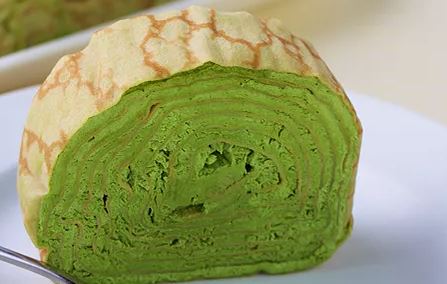
Shop manager Morita explains the motivation behind opening the store: “In order to revitalize the region, I wondered whether I could run a business using Kyoyasai, based around the theme of local production for local consumption.” Opening in October 2011, the store uses Kyoyasai, which have higher nutritional value than general vegetables and a rich flavor that is said to go well with sweets.
The store sells sweets based around Kyoyasai for each season, created by three patissiers in the in-store kitchen. The store buys in Kyoyasai grown using either no or reduced amounts of agrochemicals from contractors that include local farmers. Among their creations, the “Nishiki Roll” is selling superbly. Designated “Kyoto brand products” such as Purple Zukin soy beans are folded into the dough and the roll is sprinkled with “Horikinpakufun” gold leaf – a product with 300 years of history in Kyoto. Meanwhile, the “Horikawa Burdock Pudding” is also very popular, liked for its pleasant aroma.

